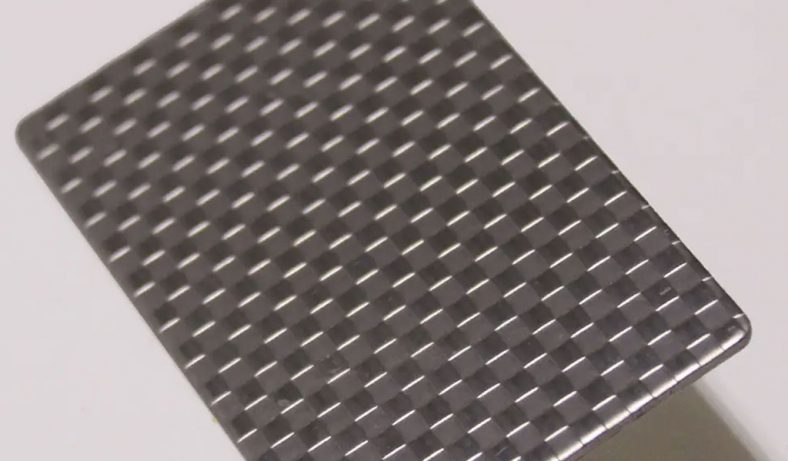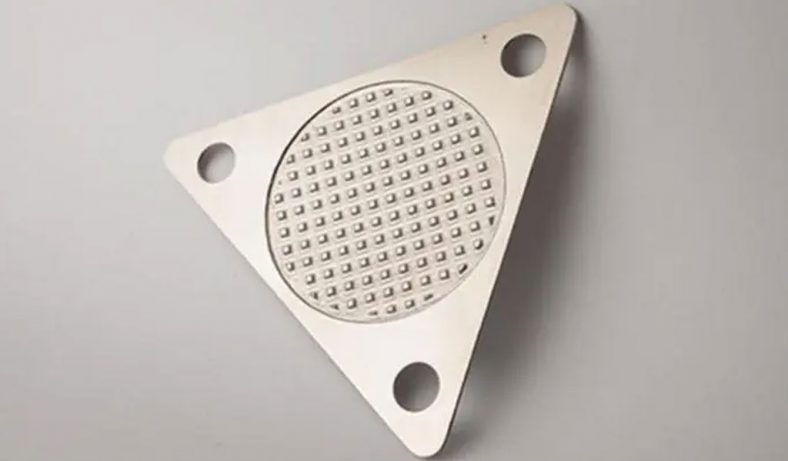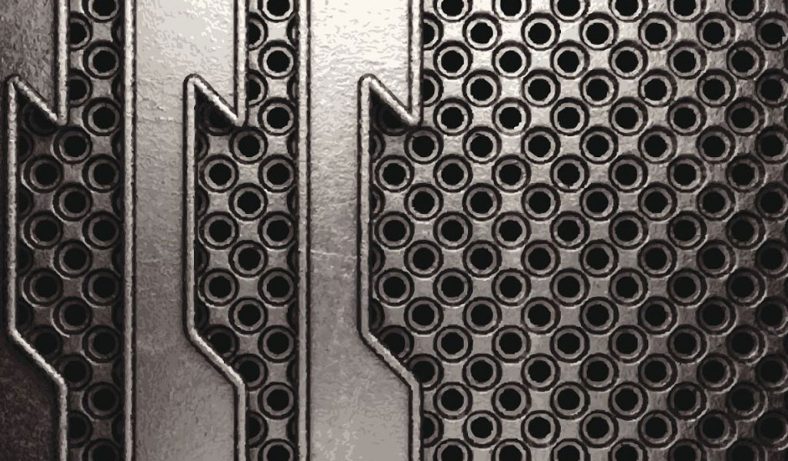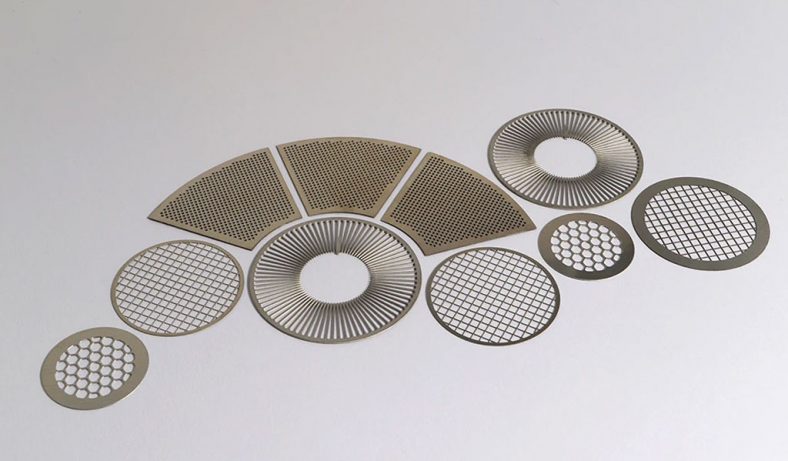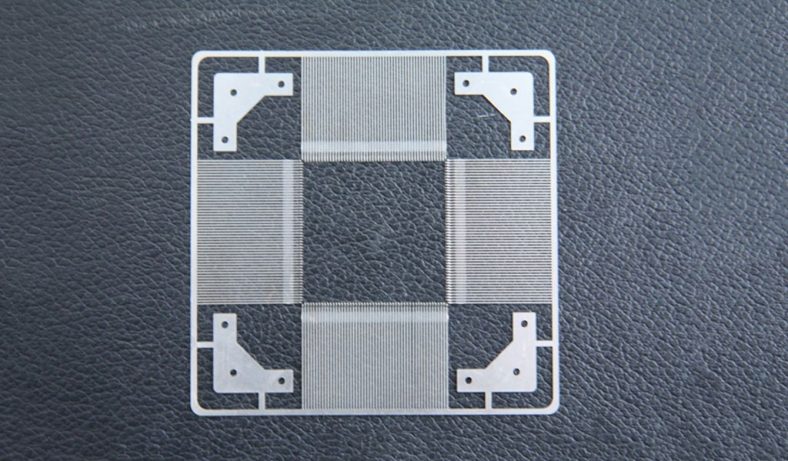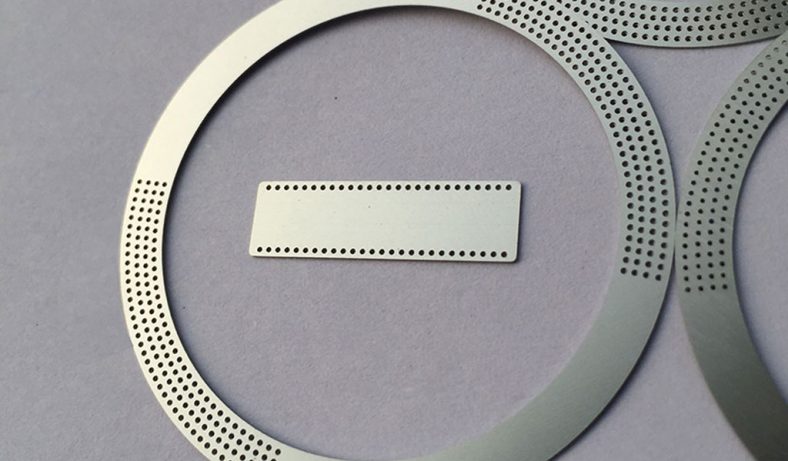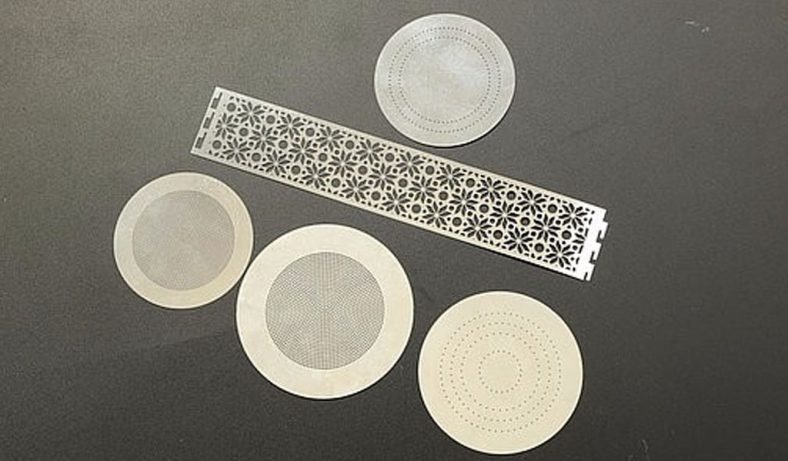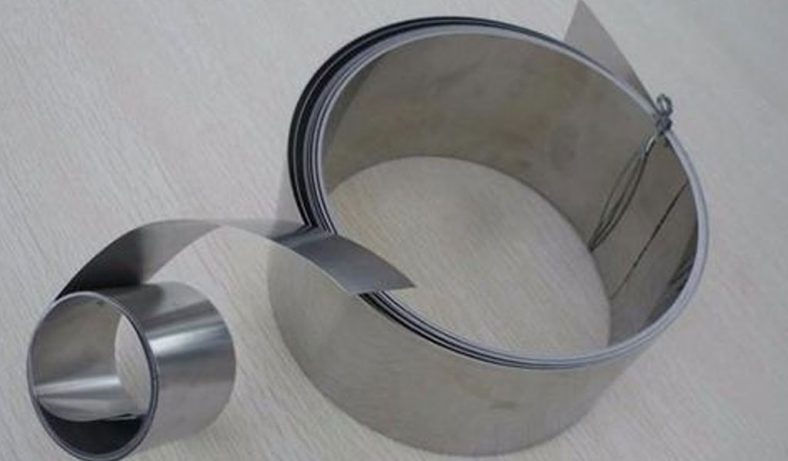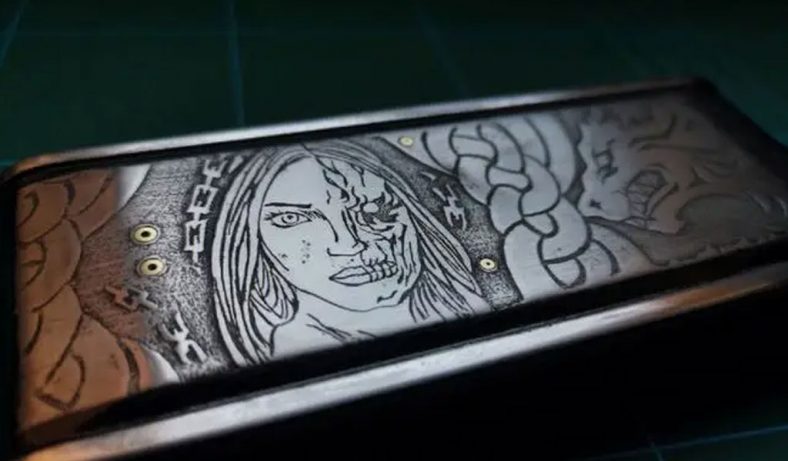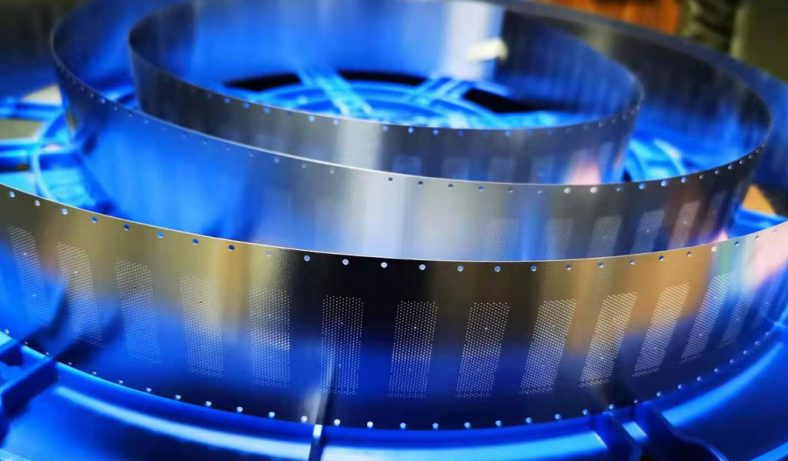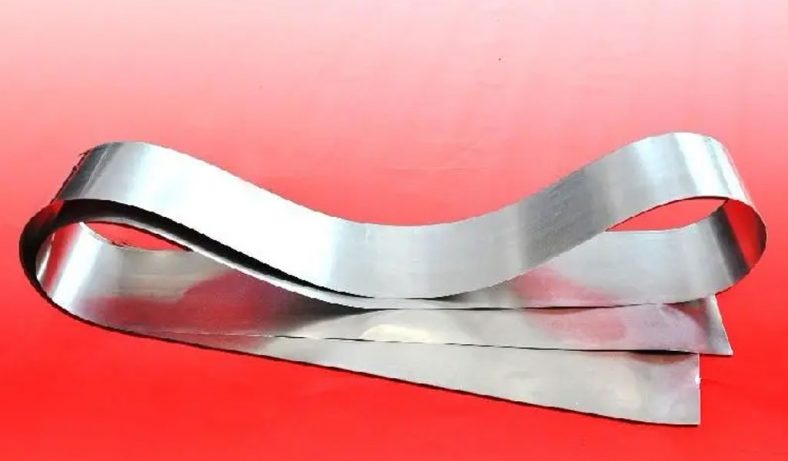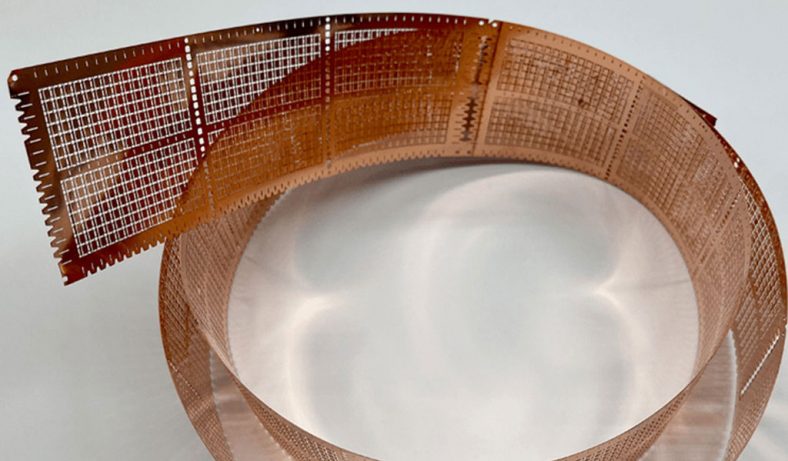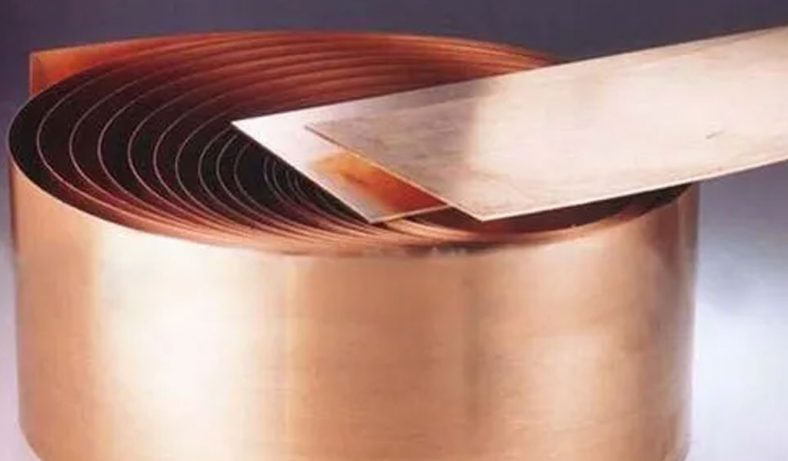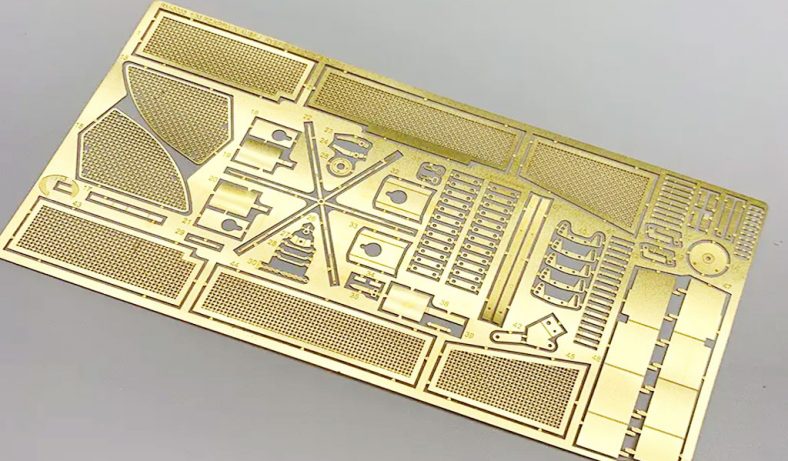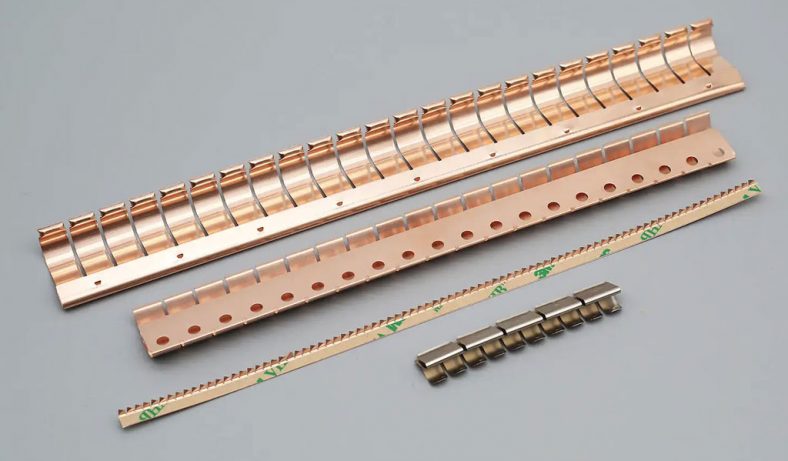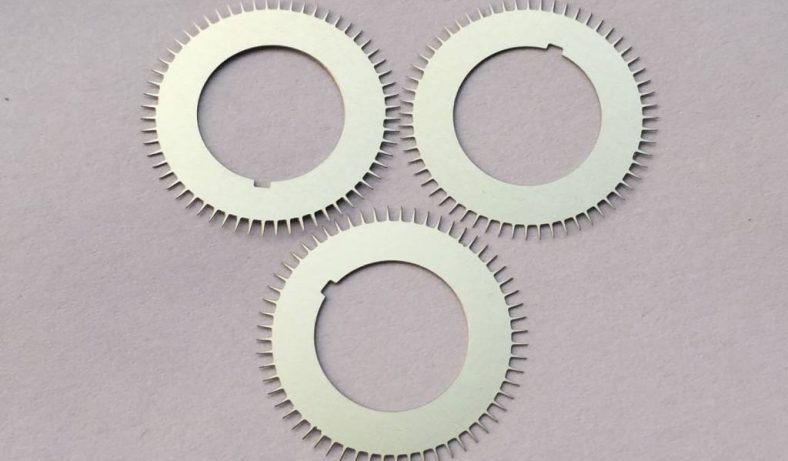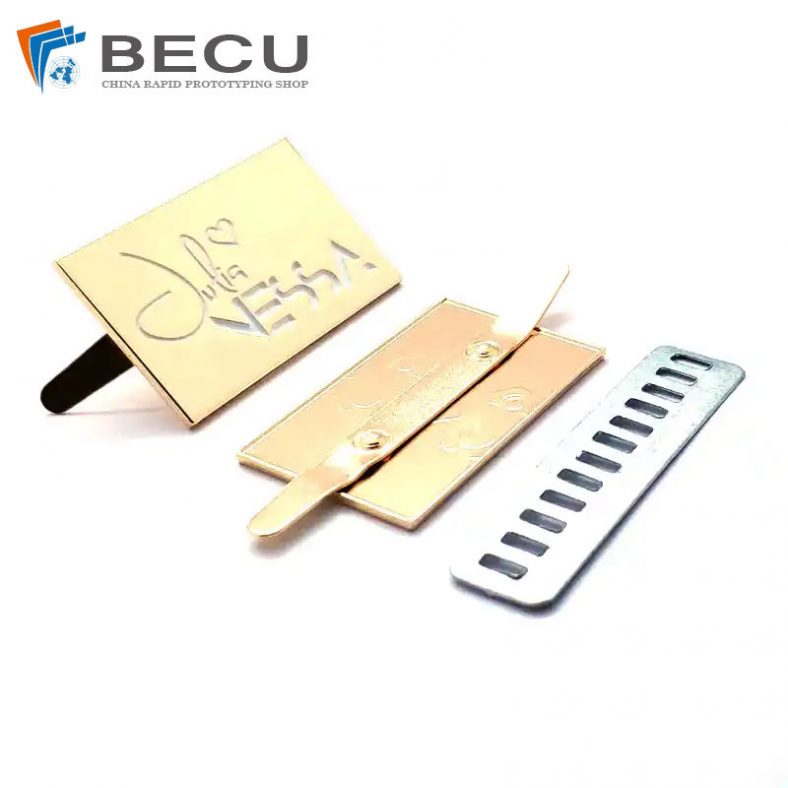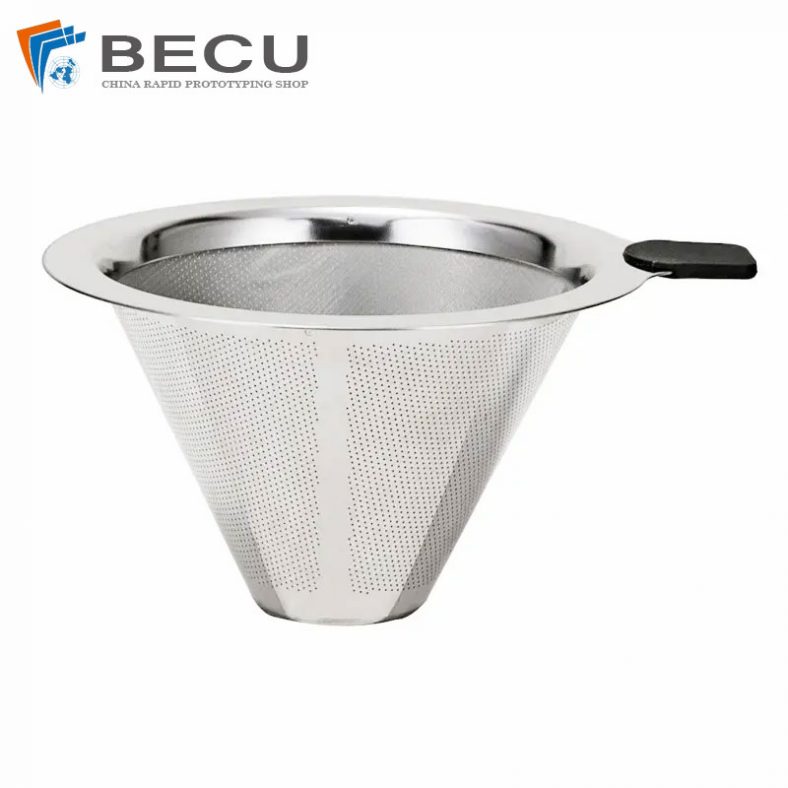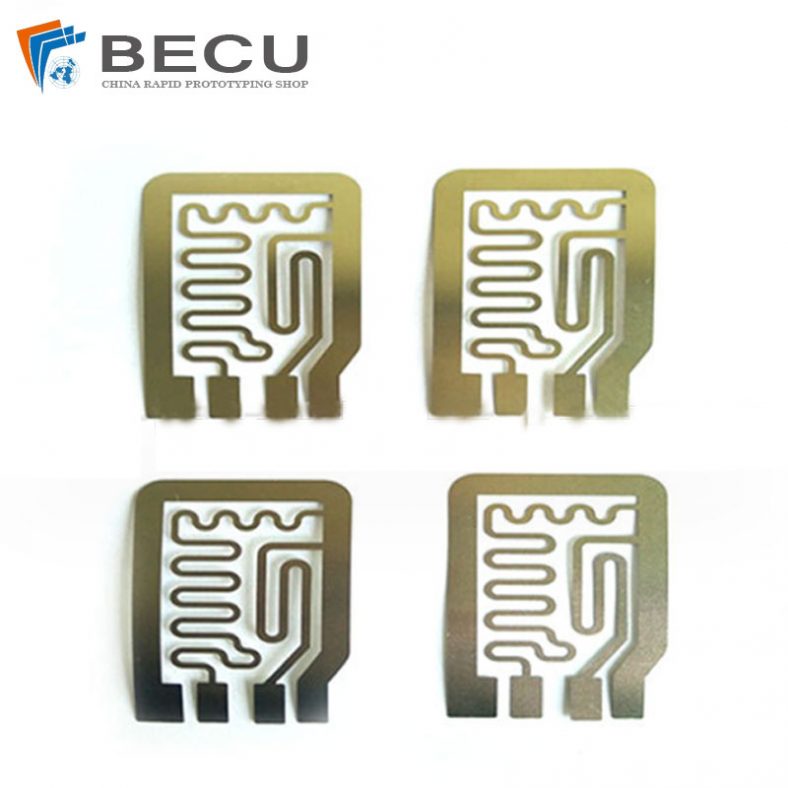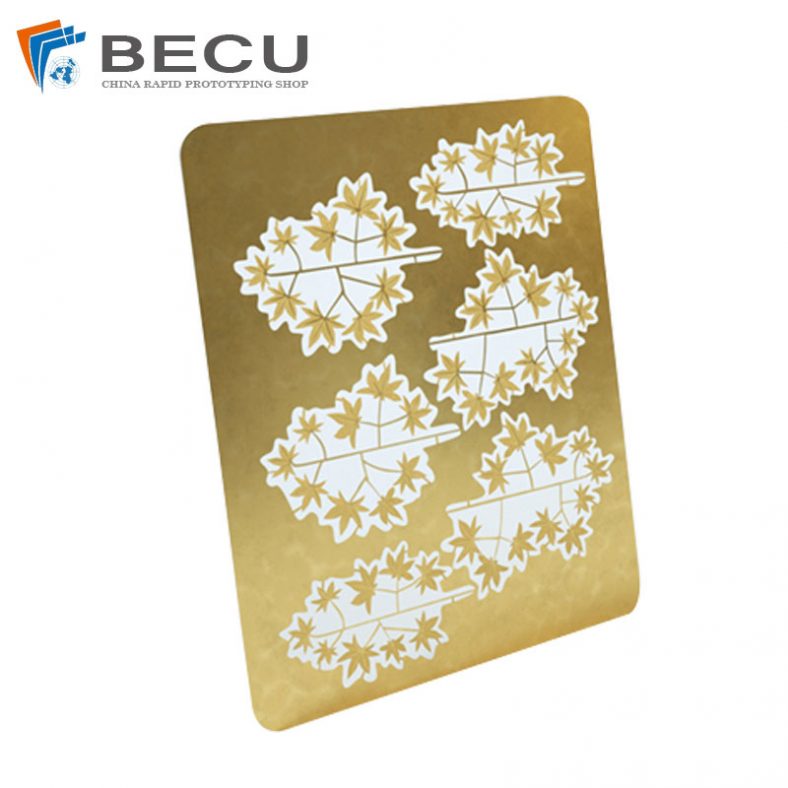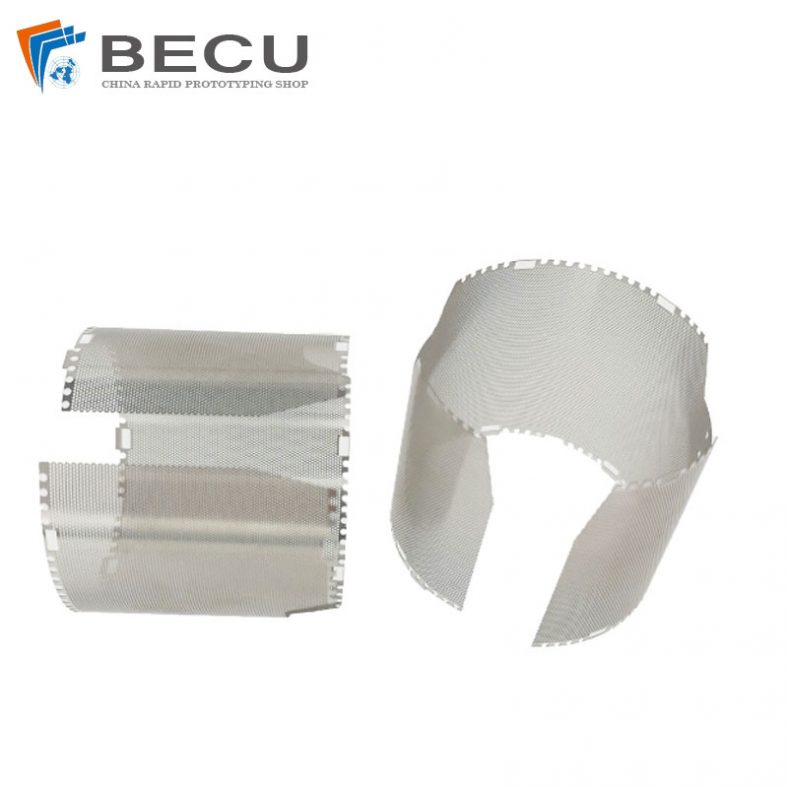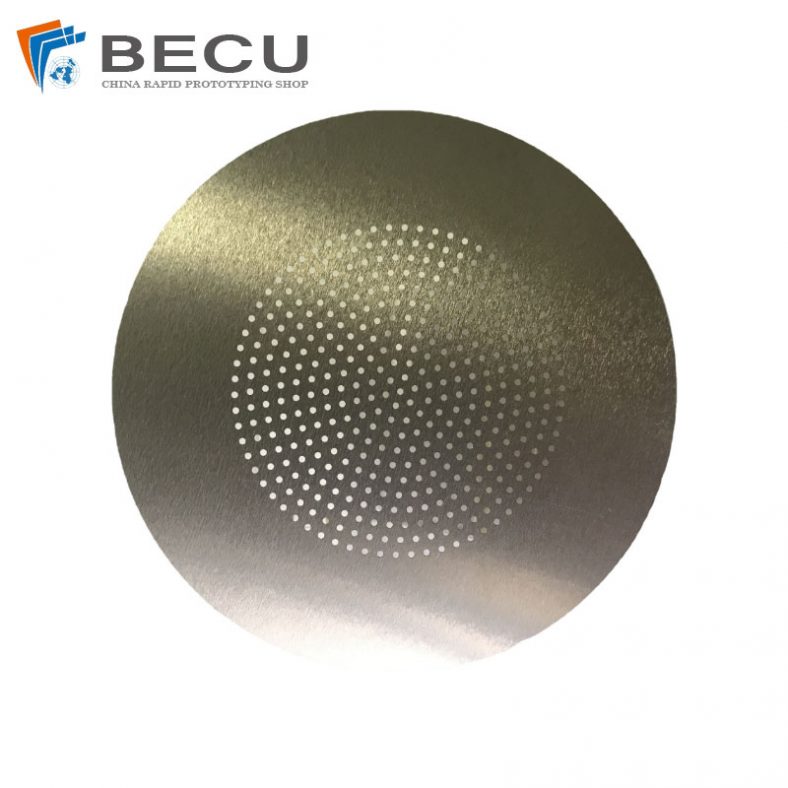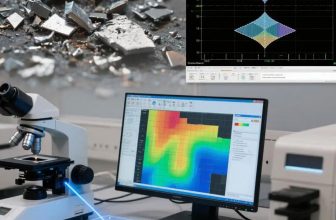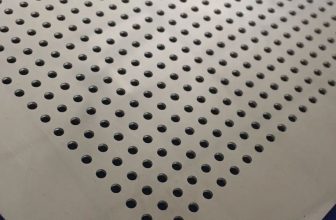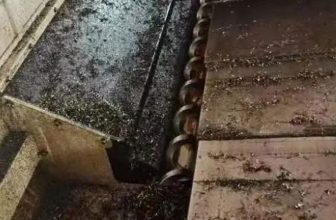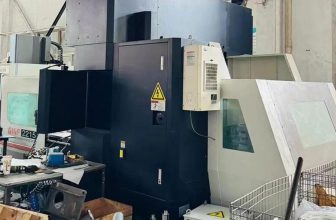Silicon carbide (SiC) is a wide-bandgap semiconductor material renowned for its exceptional physical and chemical properties, including high thermal conductivity, high breakdown electric field strength, and remarkable chemical inertness. These attributes make SiC an ideal candidate for applications in high-power electronics, optoelectronics, microelectromechanical systems (MEMS), and quantum technologies. However, the same properties that make SiC desirable—such as its hardness and chemical stability—pose significant challenges for microfabrication processes, particularly etching. Reactive ion etching (RIE) has emerged as a critical technique for patterning SiC substrates, enabling the creation of high-aspect-ratio microstructures, trenches, and smooth surfaces necessary for advanced device fabrication.
RIE is a dry etching process that combines physical ion bombardment with chemical reactions to remove material selectively from a substrate. For SiC, optimizing RIE parameters is essential to achieve high etch rates, anisotropic profiles, smooth surfaces, and minimal surface damage while maintaining compatibility with masking materials and device requirements. This article provides a comprehensive exploration of the optimization of RIE for SiC substrates, covering the fundamental principles, process parameters, plasma chemistries, equipment considerations, and emerging techniques. It also addresses challenges such as micromasking, surface roughness, and mask erosion, offering insights into recent advancements and future directions. Detailed tables are included to compare etching conditions, outcomes, and material interactions, providing a valuable resource for researchers and engineers.
Fundamentals of Reactive Ion Etching
Principles of RIE
Reactive ion etching is a plasma-based etching technique that integrates physical and chemical mechanisms to remove material from a substrate. In an RIE system, a plasma is generated by applying radiofrequency (RF) power to a gas mixture within a vacuum chamber. The plasma consists of ions, electrons, neutral species, and reactive radicals. The substrate, typically placed on a biased electrode, is subjected to ion bombardment, which physically sputters material from the surface, while reactive species chemically react with the substrate to form volatile byproducts that are evacuated from the chamber.
For SiC, the chemical inertness necessitates the use of highly reactive plasma chemistries, typically involving halogen-based gases such as fluorine or chlorine. The etching process can be described by the following general steps:
- Plasma Generation: RF power ionizes the etching gas, creating a plasma of charged and neutral species.
- Ion Bombardment: Ions are accelerated toward the substrate by an electric field, providing the energy needed to break atomic bonds or enhance chemical reactions.
- Chemical Reaction: Reactive radicals (e.g., fluorine atoms) react with SiC to form volatile compounds (e.g., SiF₄ for silicon and CF₄ for carbon).
- Byproduct Removal: Volatile byproducts are pumped out of the chamber, ensuring continuous etching.
The balance between physical and chemical etching is critical for achieving desired outcomes, such as anisotropic profiles (vertical sidewalls) or isotropic etching (uniform material removal). Anisotropic etching is particularly important for SiC applications requiring high-aspect-ratio features, such as trenches for power devices or MEMS structures.
Challenges in Etching Silicon Carbide
SiC’s hardness (Mohs scale ~9) and chemical stability make it resistant to most wet chemical etchants, necessitating dry etching techniques like RIE. However, several challenges arise when etching SiC:
- Low Etch Rates: SiC’s strong Si-C bonds (bond energy ~318 kJ/mol) require high-energy ion bombardment and reactive chemistries, often resulting in etch rates significantly lower than those for silicon (Si) or silicon dioxide (SiO₂).
- Surface Damage: Ion bombardment can introduce defects, such as lattice damage or carbon-rich layers, which degrade device performance.
- Micromasking: Residues from mask erosion or non-volatile etch byproducts can redeposit on the substrate, causing uneven etchingEnabling smooth etching.
- Mask Selectivity: Achieving high selectivity (the ratio of SiC etch rate to mask etch rate) is challenging, as many masking materials (e.g., nickel, chromium) erode under harsh plasma conditions.
- Surface Roughness: Etching can increase surface roughness, which is detrimental for optical or quantum applications requiring nanometer-scale smoothness.
Optimizing RIE for SiC involves tuning process parameters to mitigate these challenges while meeting application-specific requirements, such as etch depth, sidewall angle, or surface quality.
Plasma Chemistries for SiC Etching
The choice of plasma chemistry is a cornerstone of RIE optimization, as it determines the etch rate, selectivity, and surface quality. Fluorine- and chlorine-based chemistries are the most commonly used for SiC due to their ability to form volatile byproducts with silicon and carbon.
Fluorine-Based Chemistries
Fluorine-based gases, such as sulfur hexafluoride (SF₆), carbon tetrafluoride (CF₄), and trifluoromethane (CHF₃), are widely used for SiC etching due to their high reactivity with silicon. Fluorine atoms react with SiC to form volatile silicon tetrafluoride (SiF₄) and carbon tetrafluoride (CF₄), which are easily removed from the chamber. Oxygen (O₂) is often added to enhance the etch rate by reacting with carbon to form volatile carbon monoxide (CO) or carbon dioxide (CO₂), preventing the formation of carbon-rich residues.
SF₆-Based Etching
SF₆ is a popular choice for SiC etching due to its high fluorine content and ability to generate a dense plasma. Studies have shown that adding O₂ to SF₆ plasma can significantly increase the etch rate. For example, an optimal O₂ fraction of 20% in SF₆/O₂ plasma has been reported to achieve a maximum etch rate of 35 nm/min for 4H-SiC, with minimal carbon residue. However, excessive O₂ (e.g., >80%) dilutes the fluorine concentration, reducing the etch rate.
CF₄ and CHF₃-Based Etching
CF₄ and CHF₃ are used when smoother surfaces or higher selectivity to oxide masks are desired. CHF₃/O₂ plasma has been shown to produce an oxide-like layer (SiOₓ) on the etched surface, which can reduce roughness but may lower the etch rate compared to SF₆. CF₄-based etching is less aggressive but can be optimized for applications requiring precise control over sidewall profiles.
Chlorine-Based Chemistries
Chlorine-based gases, such as boron trichloride (BCl₃) and chlorine (Cl₂), are used for etching SiC when fluorine-based chemistries are unsuitable, such as in the presence of aluminum-containing masks. Chlorine reacts with silicon to form volatile silicon tetrachloride (SiCl₄) and with carbon to form carbon tetrachloride (CCl₄). BCl₃/Cl₂/Ar mixtures have been optimized to achieve near-vertical sidewalls (e.g., 79° wall angle) with etch rates up to 152 nm/min for alumina titanium carbide (AlTiC), a material similar to SiC. Chlorine-based etching is particularly useful for applications requiring high selectivity to nickel-chromium (NiCr) masks.
Comparison of Plasma Chemistries
The following table compares key fluorine- and chlorine-based plasma chemistries for SiC etching, based on literature data and typical process conditions.
| Chemistry | Typical Gases | Etch Rate (nm/min) | Selectivity (SiC:Mask) | Surface Roughness (RMS, nm) | Advantages | Disadvantages |
|---|---|---|---|---|---|---|
| Fluorine-Based | SF₆/O₂ | 35–450 | 4–10 (Ni, Cr) | 1.3–2.3 | High etch rate, residue-free | Limited selectivity, potential roughness |
| Fluorine-Based | CF₄/O₂ | 20–100 | 5–15 (SiO₂) | 1.0–2.0 | Smooth surfaces, high selectivity to oxide | Lower etch rate, carbon residue possible |
| Fluorine-Based | CHF₃/O₂ | 15–35 | 5–12 (SiO₂) | 1.3–2.3 | Oxide layer formation, smooth surfaces | Low etch rate, complex optimization |
| Chlorine-Based | BCl₃/Cl₂/Ar | 100–152 | 4–10 (NiCr) | 2.0–3.0 | High selectivity to NiCr, vertical profiles | Slower than SF₆, mask erosion |
Table 1: Comparison of Plasma Chemistries for SiC RIE
Emerging Chemistries
Recent research has explored alternative chemistries to address specific challenges. For instance, nitrogen trifluoride (NF₃) has been investigated for high-aspect-ratio etching of SiC, achieving high etching yields due to its high fluorine content. Hydrogen bromide (HBr) has also been studied for etching SiC alloys, offering excellent anisotropy and selectivity to oxide layers. These emerging chemistries require further optimization but show promise for niche applications.
Process Parameters in RIE Optimization
Optimizing RIE for SiC involves adjusting multiple process parameters, including RF power, chamber pressure, gas flow rates, substrate temperature, and bias voltage. Each parameter influences the etch rate, anisotropy, selectivity, and surface quality.
RF Power
RF power controls the plasma density and ion energy. Higher RF power increases the etch rate by generating more reactive species and enhancing ion bombardment. For example, increasing RF power from 50 W to 550 W in HBr plasma raised the etch rate of SiGe (a SiC-related material) from 407 nm/min to 458 nm/min. However, excessive RF power can erode masks and increase surface damage.
Chamber Pressure
Chamber pressure affects the mean free path of ions and radicals. Low pressure (e.g., 5–20 mTorr) promotes anisotropic etching by reducing ion scattering, while high pressure (e.g., 50–100 mTorr) increases the etch rate but may lead to isotropic profiles. An optimized pressure of 86 mTorr in SF₆/N₂ plasma achieved a lateral etch rate of 1.8 µm/min for silicon, suggesting potential for SiC.
Gas Flow Rates
Gas flow rates determine the availability of reactive species. Higher flow rates increase the etch rate but may dilute the plasma or increase chamber pressure. For SF₆/O₂ plasma, a total flow rate of 20–50 sccm with 5–20% O₂ is typical for SiC etching. Balancing gas ratios is critical to avoid residue formation or mask erosion.
Substrate Temperature
Substrate temperature influences the reaction kinetics and byproduct volatility. A temperature of ~150 °C has been reported to maximize the SiC etch rate (1.28 µm/min) in ICP-RIE, while higher temperatures (e.g., 400 °C) may form silicon oxide layers, reducing the etch rate. Cryogenic etching, using liquid nitrogen to cool the substrate, enhances anisotropy by reducing sidewall etching.
Bias Voltage
Bias voltage controls the energy of ions bombarding the substrate. A threshold DC self-bias of −320 to −330 V has been identified to eliminate micromasking in CHF₃/O₂ plasma, ensuring residue-free etching. Higher bias voltages improve anisotropy but may damage the substrate or erode masks.
Parameter Optimization Table
The following table summarizes typical ranges and impacts of key RIE parameters for SiC etching.
| Parameter | Typical Range | Impact on Etch Rate | Impact on Anisotropy | Impact on Surface Quality | Notes |
|---|---|---|---|---|---|
| RF Power | 50–1000 W | Increases | Improves at moderate levels | May increase roughness | High power erodes masks |
| Chamber Pressure | 5–100 mTorr | Increases at high pressure | Decreases at high pressure | May increase roughness | Low pressure for vertical profiles |
| Gas Flow Rate | 10–100 sccm | Increases | Minimal impact | Residue possible at high flow | Optimize ratios for residue control |
| Substrate Temperature | −100 to 400 °C | Peaks at ~150 °C | Improves at low temp | Oxide formation at high temp | Cryogenic for high anisotropy |
| Bias Voltage | −100 to −500 V | Increases | Improves | May increase damage | Threshold for micromasking elimination |
Table 2: RIE Process Parameters for SiC Etching
Equipment Considerations
The choice of RIE equipment significantly affects etching performance. Two primary configurations are used for SiC etching: capacitively coupled plasma (CCP) RIE and inductively coupled plasma (ICP) RIE.
Capacitively Coupled Plasma (CCP) RIE
CCP-RIE systems use parallel-plate electrodes to generate plasma, with the substrate placed on the powered electrode. These systems are simpler and cost-effective but offer limited control over plasma density and ion energy. CCP-RIE is suitable for shallow etching or applications with relaxed anisotropy requirements.
Inductively Coupled Plasma (ICP) RIE
ICP-RIE systems use an inductive coil to generate a high-density plasma, independent of the substrate bias. This allows precise control over ion energy and plasma density, making ICP-RIE ideal for deep, high-aspect-ratio etching of SiC. ICP-RIE has achieved etch rates exceeding 10 µm/min for silicon and up to 0.6 µm/min for SiC, with excellent uniformity (±1.5% over 6-inch wafers).
Advanced Configurations
Magnetically enhanced RIE (ME-RIE) and electron cyclotron resonance (ECR) systems offer additional benefits. ME-RIE, using magnetic fields to confine plasma, achieved a SiC etch rate of 0.45 µm/min with 5% O₂ in SF₆. ECR systems, leveraging microwave energy, enhance etch rates at low O₂ fractions by increasing fluorine atom production.
Equipment Comparison
| System | Plasma Density | Ion Energy Control | Etch Rate (SiC, µm/min) | Uniformity | Applications |
|---|---|---|---|---|---|
| CCP-RIE | Low–Moderate | Limited | 0.02–0.1 | Moderate | Shallow etching, low-cost |
| ICP-RIE | High | Excellent | 0.1–0.6 | Excellent | Deep etching, high-aspect-ratio |
| ME-RIE | Moderate–High | Moderate | 0.1–0.45 | Good | Residue-free etching |
| ECR-RIE | High | Good | 0.05–0.3 | Good | High etch rate at low O₂ |
Table 3: RIE Equipment for SiC Etching
Masking Materials and Selectivity
Masking materials protect unetched areas of the SiC substrate during RIE. Common masks include metals (e.g., nickel, chromium, aluminum), oxides (e.g., SiO₂), and photoresists. The mask must withstand plasma exposure and provide high selectivity to SiC.
Metal Masks
Nickel (Ni) and chromium (Cr) are widely used due to their resistance to fluorine-based plasmas. Ni masks achieve selectivities of 4–10 for SF₆/O₂ etching, while Cr masks offer similar performance in ICP-RIE. NiCr masks are preferred for chlorine-based etching, with selectivities up to 4.1:1 for AlTiC.
Oxide Masks
Silicon dioxide (SiO₂) masks provide high selectivity (5–15) in fluorine-based plasmas, particularly CF₄ or CHF₃. However, oxide masks erode faster in chlorine-based plasmas, limiting their use.
Photoresist Masks
Photoresists, such as SU-8 or AZ 1350, are used for shallow etching or low-power RIE. Their selectivity is low (1–2), and they degrade under high ion bombardment, making them unsuitable for deep SiC etching.
Mask Erosion and Micromasking
Mask erosion reduces selectivity and can lead to micromasking, where eroded mask material redeposits on the substrate, causing uneven etching. For example, aluminum contamination from chamber walls or masks can induce micromasking in CHF₃/O₂ plasma, which is mitigated by maintaining a DC self-bias above −320 V. Copper masks offer superior selectivity but are less compatible with semiconductor manufacturing due to contamination risks.
Mask Comparison
| Mask Material | Selectivity (SiC:Mask) | Compatibility | Durability | Applications |
|---|---|---|---|---|
| Nickel (Ni) | 4–10 | Fluorine, Chlorine | High | Deep etching, high-aspect-ratio |
| Chromium (Cr) | 4–10 | Fluorine, Chlorine | High | Power devices, MEMS |
| SiO₂ | 5–15 | Fluorine | Moderate | Shallow etching, oxide-compatible |
| Photoresist | 1–2 | Low-power Fluorine | Low | Prototyping, shallow etching |
| Copper (Cu) | 10–20 | Fluorine | High | Research, non-semiconductor |
Table 4: Masking Materials for SiC RIE
Surface Quality and Damage Mitigation
Surface quality is critical for SiC applications, particularly in quantum sensing, photonics, and MEMS, where nanometer-scale roughness is required. RIE-induced surface damage, such as lattice defects, carbon-rich layers, or roughness, can degrade device performance.
Surface Roughness
RIE typically increases surface roughness due to ion bombardment and non-uniform etching. For 4H-SiC, CHF₃/O₂ plasma increased RMS roughness from 1.31 nm to 2.34 nm as O₂ fraction rose from 0% to 80%. Novel techniques, such as ion beam etching (IBE) post-RIE, have reduced SiC membrane roughness to 6 nm RMS.
Carbon-Rich Layers
Fluorine-based etching can leave carbon-rich residues, which act as micromasks and roughen the surface. Adding O₂ to the plasma mitigates this by forming volatile CO/CO₂, ensuring residue-free etching. Auger electron spectroscopy (AES) confirms the absence of carbon residues in optimized SF₆/O₂ or CHF₃/O₂ processes.
Lattice Damage
High-energy ion bombardment introduces lattice defects, reducing carrier mobility or quantum coherence. Low-power RIE or post-etch annealing (e.g., at 1000 °C in Ar) can repair lattice damage, restoring material properties. Cryogenic etching minimizes sidewall damage by reducing chemical etching rates.
Damage Mitigation Strategies
| Strategy | Description | Impact on Roughness | Impact on Damage | Applications |
|---|---|---|---|---|
| O₂ Addition | Forms volatile CO/CO₂, removes carbon | May increase slightly | Reduces residues | General SiC etching |
| Ion Beam Etching (IBE) | Smooths surfaces post-RIE | Reduces to ~6 nm RMS | Minimal additional damage | Quantum, photonics |
| Cryogenic Etching | Lowers sidewall etching, enhances anisotropy | Maintains low roughness | Reduces sidewall damage | High-aspect-ratio structures |
| Post-Etch Annealing | Repairs lattice defects | Minimal impact | Restores lattice | Power devices, quantum |
Table 5: Surface Quality and Damage Mitigation Strategies
Advanced Etching Techniques
Beyond conventional RIE, advanced techniques have been developed to address SiC’s etching challenges, particularly for deep, high-aspect-ratio, or ultra-smooth structures.
Deep Reactive Ion Etching (DRIE)
DRIE, often implemented via the Bosch process or cryogenic etching, enables deep SiC etching (>100 µm). The Bosch process alternates etching (SF₆) and passivation (C₄F₈) steps to achieve aspect ratios up to 107. Cryogenic DRIE, cooling the substrate to −100 °C, achieved etch rates of 0.6 µm/min with near-vertical sidewalls.
Atomic Layer Etching (ALE)
ALE offers atomic-scale precision by separating adsorption and desorption steps. For SiC, ALE alternates Cl₂-based silicon etching and O₂-based carbon etching, achieving smooth surfaces with minimal damage. Bond energy differences (Si-Cl: 381 kJ/mol, C-Cl: 327 kJ/mol) necessitate careful gas selection.
Metal-Assisted Chemical Etching (MACE)
MACE uses a metal catalyst (e.g., Au, Ag) to induce electrochemical etching in HF/H₂O₂ solutions. While primarily wet etching, MACE complements RIE by enabling high-aspect-ratio nanostructures with minimal surface damage. Etching occurs only where the catalyst is present, offering precise control.
Technique Comparison
| Technique | Etch Depth (µm) | Aspect Ratio | Surface Roughness (RMS, nm) | Advantages | Disadvantages |
|---|---|---|---|---|---|
| DRIE (Bosch) | >100 | Up to 107 | 2–5 | Deep etching, high aspect ratio | Complex process, passivation residues |
| DRIE (Cryo) | 50–200 | 20–50 | 1–3 | High anisotropy, smooth sidewalls | Requires cryogenic cooling |
| ALE | 0.1–10 | 5–20 | 0.5–2 | Atomic precision, minimal damage | Slow, complex gas cycling |
| MACE | 1–100 | 10–100 | 1–3 | Low damage, high aspect ratio | Wet process, limited to specific structures |
Table 6: Advanced Etching Techniques for SiC
Applications of Optimized SiC Etching
Optimized RIE enables a wide range of SiC-based devices, leveraging the material’s unique properties.
Power Electronics
SiC power devices, such as MOSFETs and Schottky diodes, require precise trench etching for gate structures or edge termination. ICP-RIE with SF₆/O₂ achieves 4 µm deep trenches with 0.97 anisotropy, ideal for trench isolation.
MEMS and NEMS
SiC MEMS, such as pressure sensors or resonators, benefit from DRIE’s ability to create high-aspect-ratio diaphragms (e.g., 1500 µm × 1500 µm, 75 µm thick). Smooth surfaces (Ra ~4 nm) enhance mechanical performance.
Quantum Technologies
SiC membranes for quantum sensing require submicron thicknesses and RMS roughness <6 nm. Doping-selective electrochemical etching, combined with IBE, achieves these specifications.
Photonics and Optoelectronics
Photonic crystals and Fabry-Pérot cavities in SiC demand smooth surfaces and precise patterning. CF₄/O₂ RIE, followed by IBE, produces optical-quality surfaces with minimal scattering.
Application-Specific Etching Requirements
| Application | Etch Depth (µm) | Aspect Ratio | Roughness (RMS, nm) | Key Requirements |
|---|---|---|---|---|
| Power Electronics | 1–10 | 1–5 | 1–3 | Anisotropic trenches, high selectivity |
| MEMS/NEMS | 10–200 | 10–50 | 1–5 | Deep etching, smooth surfaces |
| Quantum Technologies | 0.1–5 | 5–20 | <6 | Ultra-smooth surfaces, minimal damage |
| Photonics | 0.5–10 | 5–20 | 0.5–2 | Precise patterning, low scattering |
Table 7: Etching Requirements by Application
Challenges and Future Directions
Despite significant progress, several challenges remain in optimizing RIE for SiC:
- Etch Rate vs. Surface Quality: High etch rates often compromise surface smoothness, requiring trade-offs or post-processing (e.g., IBE, annealing).
- Mask Compatibility: Developing masks with ultra-high selectivity (>20) without contamination risks (e.g., Cu) is critical for deep etching.
- Process Repeatability: Variations in plasma uniformity, chamber conditioning, or substrate properties can affect reproducibility, necessitating advanced process control.
- Emerging Applications: Quantum and photonic devices demand unprecedented surface quality (RMS <1 nm) and damage-free etching, pushing the limits of current RIE technology.
Future directions include:
- Hybrid Processes: Combining RIE with MACE or ALE to achieve both high throughput and atomic precision.
- Machine Learning Optimization: Using AI to model and optimize the complex parameter space of RIE, improving repeatability and efficiency.
- Alternative Chemistries: Exploring NF₃, HBr, or novel gas mixtures to enhance etch rates or selectivity for specific applications.
- In-Situ Monitoring: Developing real-time diagnostics (e.g., optical emission spectroscopy, ellipsometry) to control etch depth, roughness, and damage dynamically.
Conclusion
Reactive ion etching is a cornerstone of SiC microfabrication, enabling the creation of advanced devices for power electronics, MEMS, quantum technologies, and photonics. Optimizing RIE for SiC requires careful tuning of plasma chemistries, process parameters, equipment configurations, and masking strategies to achieve high etch rates, anisotropic profiles, and smooth surfaces while minimizing damage. Fluorine- and chlorine-based plasmas, such as SF₆/O₂ and BCl₃/Cl₂, dominate SiC etching, with emerging techniques like DRIE, ALE, and MACE addressing specific challenges. Detailed comparisons of chemistries, parameters, and techniques, as provided in this article, underscore the complexity and versatility of SiC RIE.
As SiC applications expand, ongoing research will focus on improving etch rates, surface quality, and process repeatability through hybrid approaches, advanced diagnostics, and novel chemistries. By overcoming current challenges, optimized RIE will continue to unlock the full potential of SiC, driving innovation in high-performance electronics, sensing, and quantum systems.

